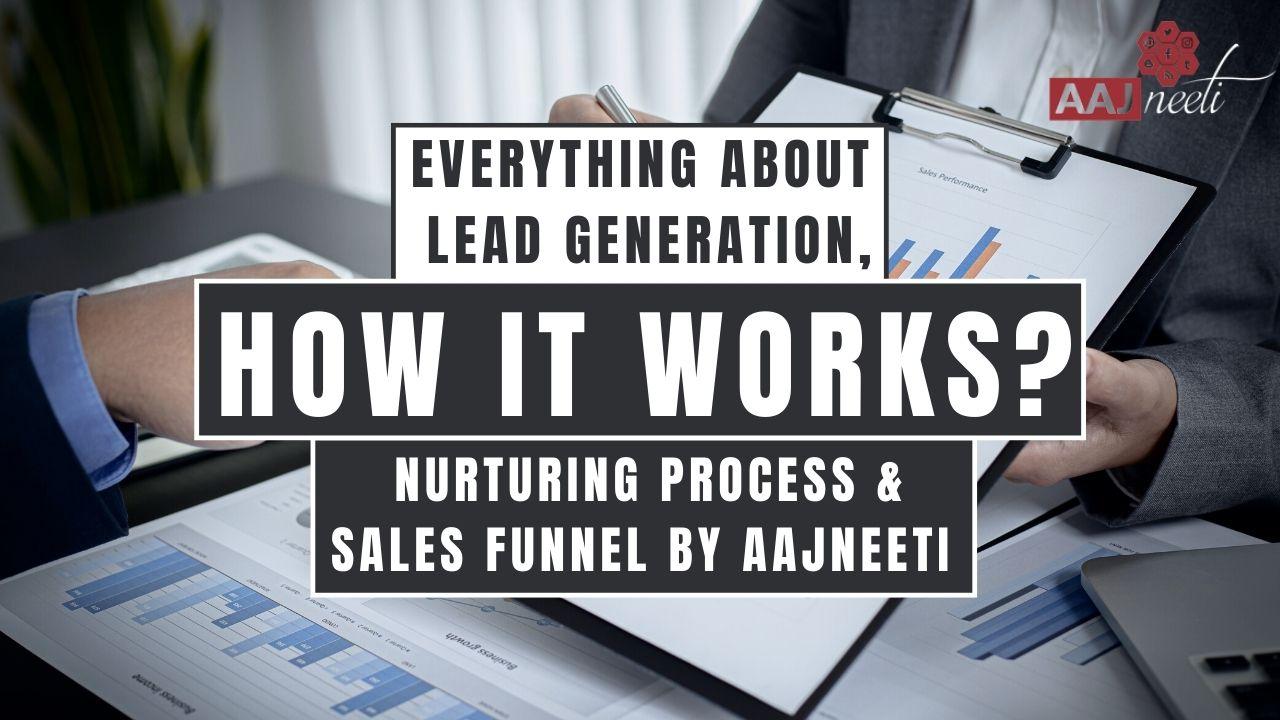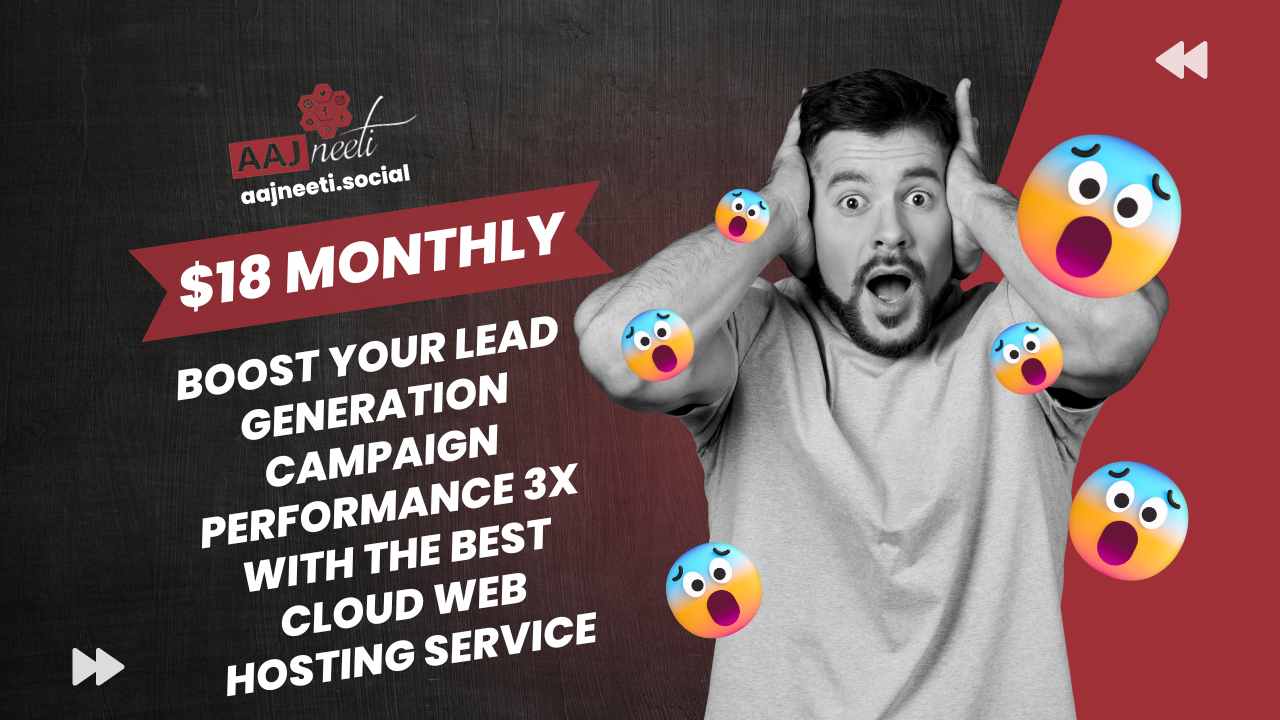Lead quality matters so much regardless of how you go about the inbound lead generation. When you are generating low-quality leads from your website, you can increase all the traffic you want. However, it will not translate into more MQL (Marketing qualified leads) or SQL (sales qualified leads). To that end, there is a lot of advice out there on measuring the quality of the leads. Most of it fails to take a few important things into account:
- For measuring the Lead quality in a useful way, marketers need to focus on the right metrics. They should not measure a thousand things and lose all sense of their clarity.
- Many marketers struggle with the Lead quality because they are not thinking about it early in their sales funnel.
Lead quality starts from the moment someone enters your website. In other words, the quality of your leads depends on the quality of your traffic. So, to actually improve the quality of your leads, you need to measure and improve the quality of the traffic.
Lead quality metrics to track
Once you have defined what makes a quality lead and the stages of lead scoring, it all needs some attention. Starting knowing the metrics you need to track to determine how effectively your marketing efforts are driving the qualified leads. Despite what those articles tell about the metric round-ups you do not have to track a hundred different metrics.
A metric is a strictly numerical measure that offers teams objective data clearly outlining the desired details. But, which metrics are the best to measure in lead generation? With so much marketing activity covering a variety of channels, gathering vital data you need can surely be a challenge. Here are some essential Lead generation metrics you need to measure for your success.
Click through rate (CTR)
Click-through rate measures the number of clicks or submissions a call to action received. Whether on your website, through an email, or some social media post. Measuring the rate of the CTAs offers your team a detailed understanding of what messages successfully convert your audience. Also, it defines which channels these messages excel on.
You calculate it by dividing your number of clicks by the number of website visitors, recipients, or advert impressions. Then by multiplying the result by 100, your click-through rate appears as a percentage.
This metric focuses on digital lead generation strategies which specifically include links. If you send an email or a message without including links there is nothing for the recipient to click through. This will impede you from measuring the click-through rate.
Conversion rate
It is an essential metric to lead generation success. Conversion rate outlines how many prospects take the desired action and move onto the next stage of your buyer journey. Similar to the click-through rate we depict this as a percentage. Simply take the number of successful conversions and divide it by the people coming into contact with your campaign. To get the result to multiply the value by 100.
This is ordinarily has a link specifically to website conversions. But, you can easily apply this to many lead generation channels. This will help your team in understanding how much data and outreach you need to produce the desired results.
Time to conversion
Measuring the time takes between key conversion steps in your buyer journey offers a vital insight. Discovering how many hours, days, or weeks stand between a prospect to discover your brand and inquire about your product. This metric is very easy to calculate.
Let us say for example you want to measure the time to conversion of your email campaign last year. Sum up the time of every email lead you generated last year. It can be from the time between their first email arrival, and their inquiry reply. Then divide the value by the total number of leads.
This will tell you exactly how long it takes a lead to discover your brand. It will help you learn enough to convince them that they need your service. This enlightens your team to possible distractions between processes and asks how you can achieve any instant state of conversion.
Cost per lead
Cost per lead measures the amount each lead costs your marketing team. Of course, a low CPL is positive, you are getting a qualified lead for less money. You are more likely to secure a happy return on investment. Simply divide the total money spent on lead generation by the number of leads acquired. This will show how much each lead costs your marketing team and offers an incredible perspective.
The average cost per lead varies based on the industry and marketing channels you use. This metric is important to know. As if every lead costs you a large amount you will want to ensure that they have a high quality. Also, your sales team must properly handle them to produce satisfactory returns.
Leads per channel
Every lead generation channel will have its own set of important metrics to help you improve channel campaigns and strategy. You need to simply understand how many leads you generate per channel. Some will undoubtedly deliver more than the others. Especially if that channel benefits from a larger team or more updated software. But, looking into the seriously under-delivering channels can be valuable.
The more you understand your ideal buyers and their preferences, the better you can strategically plan your future marketing ventures.
Month to date success
Simply knowing where each channel stands against monthly targets every week offers a large range of business benefits. Firstly, it allows you to constantly understand how your results look against the committed business stats. Also, it allows you to know whether recourse is possible or if you need to exercise contingency plans. Do not bury your heads in the sand and just carry on as normal. You need to be aware of your month to date progress helps you stay in control of campaigns. This will help you to plan the details to best meet current needs.
Leads to qualified leads
It is all very well generating a bounty of leads but they must match your lead qualification criteria. Otherwise, you will have wasted money and effort to gain useless business contact. Understanding how many of your leads have been successfully qualified by your team provides detailed insight into your Lead quality. This ensures that you are targeting the right audience and gaining the right attention.
Return on Investment
ROI is one of the most important metrics of all. It helps your team in understanding how much revenue return has been gained for specific marketing campaigns. Simply consider the amount spent on the lead generation efforts and the revenue gained from the sales made. ROI is a vital figure to note when planning future strategies. It ensures that you do not invest an additional budget in areas that will fail to deliver a satisfactory result.
Most effective strategies for measuring Lead quality
It is no surprise, but for sheer ease of implementation and effectiveness of results, nothing beats good, old-fashioned email marketing. Websites and landing pages are pretty close behind with content marketing making noticeable gains. It is also worth noticing that the survey shows that email marketing is one of the easiest tactics to implement.
But notice the relative difficulty of the other measures such as content marketing. Surely it gets some decent results but does it have an effective budget spend? The effectiveness and difficulty run parallel. Keep in mind that email marketing has been around much longer. Therefore we have had much more time to experiment and learn how to interact with the prospects. Marketers are making huge strides in creating new tools that make content marketing more relevant and personable. But we are still in the collective crawling stage with it.
While we are on that topic take a keen look at the testing and optimization. You might have seen only Low effectiveness and relatively high difficulty. It might have surprised you but you do not have to. That is because testing and optimization is not a lead generation strategy in itself. It is something you do with the other strategies.
So now we know that email marketing is both one of the best converting and the most cost-effective measure. You might be wondering, what comes up next. You must not load up and catapult a bunch of messages to our prospects’ inboxes. Remember to nurture the leads you have got into our funnel at that point.
Lead quality: Nurturing Goals
When a question arose about the most important objectives of a lead nurturing campaign the answers varied so much. Most responded as you might imagine i.e. to increase the conversion rates or open up more sales opportunities.
Right behind these responses, someone threw a very surprising answer into the mix which was Lead qualification. This idea namely revolves around ensuring that a lead has the best certainty to make a decision and convert. This means understanding the difference between Interest and Intent.
Many people have an interest in something, but very few have intent at that point to purchase. As of yet, there are no tools that can seamlessly predict this kind of action. Although, there are many ways to go through the process. No matter what, it is still a heavy burden on the sales team. They need to discern who is ready to act and who is just a well-meaning enthusiast.
So when it comes to nurturing the leads, which strategy comes out on the top? Ultimately the email marketing turns out to be the choice. But what specifically is about an email that the people respond to? As it turns out the best effects on lead nurturing come from creating some relevant content. But do notice some other points below these which have far fewer reported success rates:
- Campaign personalization
- Targeting by persona
- Targeting by the stage in decision making process
There are all the things that email marketing excels at. You can use the CRM data to segment the leads based on the persona they most closely match. Also, categorize what stage they are in when it comes to making a decision. You can personalize your campaign with all the relevant details in the world but the prospects still will not bite.
Relevance and Relatability
So far marketing has tried to create the appearance of relevance in the campaigns. We try to do this by personalizing emails to give the prospects more of a sense of me-to-you conversation. We try to align them with personas like theirs in attempts to get inside their minds. This helps to find out what motivates them to purchase. We look at how close they might be to making a decision and we market accordingly.
The fact is that marketers are both smart and swift in using technology to automate their follow-up and nurturing tasks. The problem however is that people know it clearly. They know you are just filling up the blanks in a software program trying to put them into neat boxes. That too based on a few scraps of information. that you have gleaned from them.
Of course, that begs a simple question. How to create relevant content without the people telling you anything about themselves? They will tell you everything but you need to ask sincerely and politely.
Creating better Communication
Maybe the better question is what challenges or frustrates you? or what can I help to solve for you? If a prospect knows that you can relate to them personally they will be much comfortable sharing with you. It is not currently possible to write content that appeals to everyone at every moment. But it is possible to open up communication and get suggestions for some new content while acknowledging the source.
There is a bottom line you have whether you are looking to attract more leads or help grow the leads. Simply shift your approach from pure sales and marketing to problem-solving. Email is an open invitation of a prospect to get as close to them as you possibly can. It is something they can access anytime and anywhere.
Also, it is the best approach you are going to have at learning about their unique issue. It can be effective in demonstrating precisely how your product or service solves an issue. Not in high pressure or an approach filled with hype but in a very friendly, open, and personal way.
Why measuring Lead quality, alone is not enough?
It is true that you can not improve what you do not measure. But, measuring alone will not spontaneously give you high-quality leads. One of the biggest reasons marketers struggle with low Lead quality is because they have low-quality website traffic. The metrics we recommend can tell you if your traffic is producing poor leads. But, they can not fix the problems all by themselves.
You must take action to attract higher-quality traffic at the expense of the sheer number of leads. However, you must do it only if necessary and this is how you can boost your Lead quality. The key to improving traffic quality is understanding what is wrong with it in the first place.
You can measure lead quality in two ways:
- Closing potential describes how easy it will be to convert a prospect into a customer.
- Revenue potential describes how much money a prospect could generate over a lifetime or a fixed period of time.
Both are important but clearly, not all sales have the same potential. Let us look at two examples:
Two completely different examples
Assume you are a banner printer and you get two leads. One is from a single pizza shop and the other from a chain of family dining restaurants. On the leads from the pizza shop, the owner provides his telephone number and the best time to call. He also checks off the box ‘Urgent’. The closing potential is high but as a single pizza shop, the revenue potential is low. It may be even lower to meet the minimum required criteria for a printer.
For a chain of restaurants, it is a different story. The lead form provides no telephone number and includes a check-off of the ‘long term interest’ box. As a restaurant chain, the revenue potential is high. It may be very high depending upon the number of restaurants in the chain. But the closing potential is low based on the ‘long term interest’ indication by them.
So which one is a better lead for you? One will close more easily but the other will bring you a larger sale.
Lead quality: qualifying criteria
There are a number of factors that go deeper into determining Lead quality. You may be familiar with the BANT formula which stands for Budget, Authority, Need, and Timing. It is a checklist of sorts that the salespeople commonly use to qualify their leads. However, it has its critics. It can play a role but you need to adjust it with each situation. Not all elements are equally important for the purpose. But two more items can be important and those are Revenue and Interest. Let us look deeper into the BANT:
Budget
Does a prospect have the budget for your product or service? Many salespeople ask the prospects how much they have allocated for the project which is often premature. The reality is many new prospects can not answer that question, especially in the early process. The more important question is can they afford you or not? We initially answer this question by researching the company size either by sales volume or number of employees. While this is not always reliable but it is a good start.
Even if your prospect can afford you, the budget is also a matter of expectation. If someone has never bought a product or service like you they may have no sense of what it costs. Just giving the prospects an average price range, could help to determine whether a prospect meets the Budget criteria.
Authority
Does a prospect have the authority to make a purchasing decision? Many salespeople only want to have conversations with the owners or managers (people with some significant authority). There are many influencers who you should consider in this process.
This is especially true in today’s world as people often ask lower-level employees to conduct initial research on the web. And not the individuals but a team makes any final decisions. You should also note that staffers are often the ones who actually use and benefit from the product or service. While they may not have significant authority but they can specify and influence the decisions.
On the surface, having an actual need for your product or service seems pretty obvious. If you pave the driveways, you need to reach homeowners who do not have the driveways. If you sell an application for iPhone you need to know if you are speaking to an iPhone user. But it is not that easy. You may have a service that a company of a certain size can use in a particular way. But you have no real evidence of it until you ask someone for.
Timetable
What is a Timetable for any decision? Some leads come to you for buying today but are few and far between. The reality is that most of them have long term plans or no timetable at all. Even if you get them to respond to your offer. It still might be to satisfy the curiosity more than to help with a purchasing decision. Getting back to the menu printer the chain of restaurants is clearly a better prospect than the single pizza shop. At least it is when you see it from a potential revenue standpoint.
But do not assume the largest companies are always the best. Sometimes you discover that the largest companies are bad prospects as they do what you do in-house. The only key is to find a sweet spot which might take a while to do so. Many companies separate out those prospects with the highest revenue potentials. They apply very aggressive sales and marketing strategies for this group. They are often termed as Targeted accounts or Major accounts.
Interest
Do they have an interest in what you are offering? In many ways, this is what lead generation is all about. Getting the customers to raise their hands to say that they have an interest. Through list research, we can usually identify the prospects with the right budget, authority, need, and revenue potential. But interest needs to have a demonstration. Here are a few ways to demonstrate the interest:
- By the offer: Let us say that the lead is responding to a free demonstration instead of a white paper. This means that the interest is higher.
- By the contact info: Let us say that the lead provides a telephone number and the best time to call. This too means that you have higher interest.
- By the method of response: Let us say that the lead responds by phone instead of mail or landing page. This shows a greater sense of urgency.
- By questions on the lead form: If the lead is willing to answer some of the qualifying questions.
Later in the sales process, you can judge their interest by their mail opening rates and click-throughs.
Lead quality from different sources
When you measure the Lead quality consider the source of your leads.
Direct marketing leads
If your leads are coming from direct mail, telemarketing chances are you did some list research before executing your campaign. This means that all your leads should have a pre-qualification for the budget. With the response, you also receive the interest.
Online marketing leads
Contrast direct marketing leads with the leads that come from online marketing or inbound marketing (content, blogging, search). Online leads are very appealing because of their low cost but Lead quality is always an unknown quality. The reason is you have no control over website visitors so you do not know anything about these leads. All you know is that they had an interest in providing an email address. But that is not enough.
Your lead could be the CEO of a major prospect or a college student performing research. Until you are able to gather more information through a follow-up step the lead will remain a suspect.
Traditional media leads
This is not unique marketing though. You have the same challenge with traditional media marketing because you can not control who sees your advertisement and responds. This is not an argument for one source over another. Even if one source provides greater Lead quality insights, chances of cost per lead of that source will be higher.
Lead quality: Qualifying techniques
Once you have gathered all the necessary information you can on a lead what do you do with all that? You need a way to prioritize your leads and some system to keep it all organized.
Lead bucketing
This is the most common method to drop the leads into the bucket. Simply label every lead either a hot lead, warm lead, or a cold lead. This is not much a system at all but it is a way to start with. Eventually, you will find a system that can help you. Let us see these better methods in detail.
Lead Scoring
Lead scoring is a popular method of lead qualification that attaches numerical values to each of your lead. So you would rank each lead on a scale (for example 1-10) by how well it met your lead criteria. These criteria include budget, authority, need, timetable, revenue, and interest. The highest score on the scale would be 60 (10×6) and the lowest score would be 6 (1×6). The scale can have any defined range that suits your needs.
In the development of your lead scoring system, you might also want to give more weight to your specific categories. For example, you decided that the authority was not as important as the other categories. And the revenue and interest were more important, you might have the following scale:
- Budget: 1-5
- Authority: 1-3
- Need: 1-5
- Timetable: 1-5
- Revenue: 1-10
- Interest: 1-10
This gives more weight to the Revenue and Interest, and less weight to the Authority.
Lead Mapping
Lead mapping uses the same categories as the above. But, instead of using numerical attributions, the leads rise up in appropriate steps of the sales process. Start by mapping out your sales process, for example:
- Inquiry
- Lead
- Qualified Lead
- Sales Engaged Lead
- Sales Ready Lead
- Proposal Lead
- Trial Customer
- Customer
As you collect the information and take the actions, the lead moves along the sales process.
Lead quality and ROI
Return on Investment is an important gauge for measuring the success of any lead generation effort. For obvious reasons, the higher the Return on Investment, the better that particular Investment is. Businesses can look at optimizing processes, making them more efficient to improve the Return on Investment of a specific activity.
When you focus on Lead quality the chances of converting a lead into an actual sale significantly increases. This means that resources spent on acquiring that lead pay off when they become customers. Focusing on the Lead quality also improves each customer’s lifetime value by nurturing relationships and enhancing loyalty with current clients. This in turn improves Return on Investment over an extended period.
Concentrating on the Lead quality implies shifting resource expenditure to target the selected leads only. This means that the volume of leads is likely to have an impact on this. But while lead pools might be smaller it also means that the leads are the aim and defined precisely. So you may not be getting as many leads in general. But surely you will be spending your resources more efficiently and getting more bang for your buck.
Conclusion
People often term advertising and marketing campaigns as winners or losers based on the numbers of leads they generate. But that is a very simplistic measurement. You also need to take into account the account lead quality. Instead of looking at your response rates or cost per lead, establish some benchmarks for a qualified lead. You need to start looking at your qualified response rates or cost per qualified lead.
This will provide you with a holistic view that considers key performance indicators at every touchpoint. You will have an in-depth knowledge of your channels and campaigns. This approach will give you everything you need to make smarter business decisions that improve your lead generation results.















